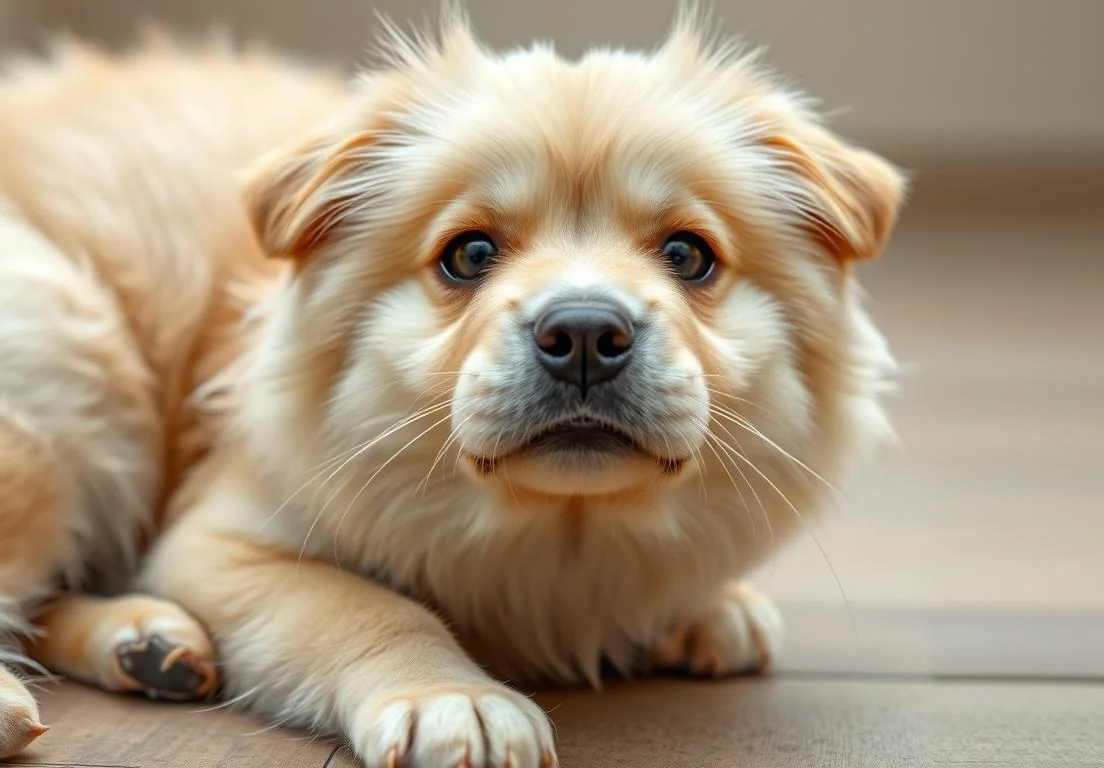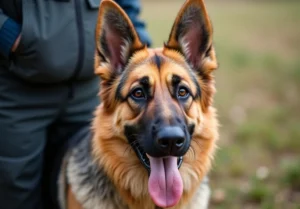Cats flick their tails with a flick of finesse, while dogs wag theirs like flags of joy. Why the tails, you ask? It’s more than just a cute accessory; tails are essential tools of communication and balance for our furry friends.
Tails serve a vital purpose in both cats and dogs. They help with communication by expressing emotions and intentions, and they assist in maintaining balance while running or climbing. But there’s much more to these fascinating appendages, hidden in their unique movements and historical significance—let’s explore!

How do tails aid communication?
Tails are a crucial part of how cats and dogs express themselves. These furry appendages act as signaling devices, conveying a range of emotions through specific movements. For instance, a wagging tail in dogs is often a clear indicator of excitement or happiness. When they wag it quickly and broadly, it’s a good sign they’re feeling social and friendly. Conversely, if a dog’s tail is held low and wagging slowly, it can mean they’re feeling insecure or unsure.
Cats, on the other hand, have a different tail language. A raised tail signifies confidence and contentment—think of it as their version of a friendly wave. If you see a cat flicking its tail, especially when it’s held low, it can indicate irritation or annoyance. Additionally, the position of the tail can reveal a lot: a puffed-up tail might suggest they’re feeling threatened or scared.
Understanding these signals can really enhance your interaction with pets. Observation is key; matching these movements with the pet’s overall body language gives you the full picture of what they’re trying to communicate.
What role does a tail play in balance?
Tails serve as a natural balancing tool for pets, helping them maintain their stance during various activities. For instance, when a dog runs or plays, its tail acts like a rudder, aiding in quick turns and swift movements. This is particularly evident in breeds like the Greyhound, where the tail helps them steer at high speeds.
Cats have an even more pronounced use for tails in balance. As they climb or leap, their tails function like a counterbalance, allowing them to perform those graceful acrobatics with ease. When a cat sits, its tail also helps keep them upright, especially in precarious positions.
Additionally, an interesting angle to consider is how certain breeds have evolved specific tail functions based on their natural behaviors. For instance, Manx cats, known for their unique lack of tail, often adjust their body movements to compensate, showcasing just how pivotal tails are in the animal kingdom. The presence or absence of a tail can really shape the way these animals navigate their environments.
Are all tail shapes created equal?
Tail shapes aren’t just for show; they often reflect a cat or dog’s unique instincts and abilities. For instance, long and slender tails are common in breeds that rely on balance and agility, like the Abyssinian cat or the Siamese. These tails help with sharp turns and quick movements, crucial for their hunting tactics.
Conversely, bushy tails serve different purposes. Many breeds designed for cold climates, like the Alaskan Malamute, have thick tails to curl around their bodies, providing warmth in frigid weather. The shapes also play a role in communication; for example, a straight, upright tail typically signals a happy, confident pet, while a tucked tail can indicate fear or submission. Understanding these nuances helps us appreciate just how much a tail can reveal about our furry friends’ personalities and behaviors.
How do breeds influence tail functionality?
Different breeds have distinct tail functions that directly relate to their backgrounds and purposes. For instance, herding dogs like Border Collies sport long, feathered tails which serve as a form of communication with their flock. They use these to signal intentions, helping them steer livestock without barking.
On the other hand, scent hounds, such as Basset Hounds, often have long, droopy tails. These are designed to keep them visible to their handlers in dense underbrush while they follow scents.
Here’s a more focused look:
- Herding breeds: Tails serve as signals to livestock.
- Hound breeds: Tails help with visibility and tracking scent.
- Toy breeds: Often have shorter, more delicate tails that express excitement or happiness.
Essentially, each breed’s tail has evolved not just for looks but to support specific functions that align with its instincts and duties. Understanding this can deepen our bond with these remarkable companions, appreciating all the subtle ways they communicate and adapt.
What historical significance do tails have in domestication?
Tails aren’t just a cute feature; they play a significant role in the evolution and domestication of cats and dogs. The ancestry of our pets traces back to their wild counterparts, and their tails reflect this history. For dogs, tails were essential for communication in the wild. A wagging tail indicates excitement or friendliness, while a defensive posture can signal fear or aggression. Over generations, as humans domesticated dogs, these signals became a crucial part of their interaction with us — deepening our bond.
In domestic cats, tails serve a similar purpose. Wild cats use their tails to express emotions and maintain balance, particularly when climbing or hunting. As they became more domesticated, these tails retained their communicative function, helping convey feelings like happiness or irritation. Interestingly, variations in tail shapes across breeds — from the curled tail of a Japanese Bobtail to the long, flowing tails of Siamese cats — reflect specific man-made selections based on utility or aesthetic preferences while still holding onto remnants of their wild origins.
Understanding the evolutionary significance of tails helps us appreciate how our furry friends communicate their emotions today, which is especially helpful in forming a stronger connection with them.
Can tails be injured, and how does that affect them?
Tail injuries can happen more often than you’d think, often from accidents or rough play. It’s essential to recognize the signs of a potential injury. Common indicators include limping, favoring the tail, or excessive grooming around the area. Tail injuries can range from minor bruises or strains to serious fractures, each impacting your pet’s health and behavior differently.
The consequences of an injured tail can extend beyond physical discomfort. For example, a cat with a hurt tail might become withdrawn or irritable, while a dog may show signs of aggression due to pain.
Here are some common tail injuries and their symptoms to watch for:
- Fractures: If a pet seems unwilling to wag or hold their tail normally.
- Sprains: Notice swelling or signs of pain when you touch their tail.
- Wounds: Look for any noticeable cuts or lacerations accompanied by bleeding or excessive licking.
Treatment often depends on the severity of the injury. Mild cases might require rest and care, while more serious cases could need veterinary intervention. Caring for an injured tail promptly can prevent more severe complications, so if you notice anything unusual, don’t hesitate to consult your vet. Understanding tail injuries helps promote better overall health and well-being for your furry companions.
What do unique tail behaviors reveal?
Tail movements are more than just decorative features for cats and dogs; they’re communication tools that convey a range of emotions and attitudes. For instance, when a dog’s tail is wagging enthusiastically, it often signals a happy demeanor. But did you know that the direction of the wag can provide insights too? A wagging tail that tilts to the right often indicates positive emotions, while one that wags to the left may reflect anxiety.
Cats, on the other hand, express a variety of feelings through their tails. A cat with a straight-up tail is usually feeling confident and friendly. If it flicks its tail quickly, it might be annoyed. Some breeds, like the Siamese, are known for their particularly expressive tails, often using them in play and interaction, which can hint at their sociable nature. Understanding these behaviors gives pet owners a clearer picture of what their furry friends are feeling, enhancing the bond between them.
What recent studies reveal about tails?
Recent research sheds light on the significant role tails play in animal communication. A study from the University of Sussex highlighted that dogs use their tails primarily to communicate with humans, showcasing just how much our furry friends have adapted to understand our signals. Tails, it turns out, are not just for balance or defense; they’re vital for social interactions.
Research also indicates that tail signals can differ across dog breeds, affecting how they express emotions and intentions. For example, herding breeds often have a more upright tail position, which reflects their alert nature and readiness to interact with their environment.
Moreover, studies on cats reveal that they use their tails to communicate not only with other cats but also with humans, often reflecting their mood or intent. A recent paper published in the journal Behavioral Processes reveals that cats signal their affection and comfort by wrapping their tails around their owners. Understanding these nuances can bolster the connection pet owners feel with their furry companions, leading to a more harmonious home life.
Can training influence tail behavior?
Training can significantly impact a dog’s tail movements, which in turn affects how they communicate with other dogs and humans. A dog’s tail doesn’t just wag out of sheer joy; it conveys a multitude of emotions and intentions. For instance, a high wagging tail often signals excitement or happiness, while a low tail position might suggest submission or fear.
Through positive reinforcement training, owners can help their dogs associate certain actions with positive outcomes. This could lead to a tail wag in specific scenarios—like during a greeting or playtime. Over time, consistent training can refine these movements, encouraging dogs to express friendliness or confidence, helping both dogs and their owners understand each other better.
Moreover, a trained dog is more likely to exhibit controlled tail behaviors in social settings, reducing the chances of miscommunication. For example, a dog that has learned to greet with a cheerful wag instead of a nervous twitch can foster stronger connections with both humans and other animals.
Unique to dogs, their tails are essential tools for communication that change depending on their training. Recognizing the subtle shifts in tail position and movement can aid owners in understanding their pup’s mood and intentions, ultimately enhancing their bond.
Are there cultural significances tied to tails?
Exploring how different cultures view dog and cat tails reveals fascinating insights into symbolism and meaning. In many societies, a dog’s tail is often associated with loyalty and fidelity. For example, in some Native American cultures, dogs are seen as spirit guides, and their wagging tails symbolize friendship and companionship.
In contrast, cat tails can represent independence and mystery. In Japanese culture, for instance, the Maneki-neko (beckoning cat) often features a raised paw and an elegantly curled tail, signifying prosperity and good fortune. Tail position can also influence perception—an upright tail in cats often indicates confidence and approachability, while a puffed tail might suggest fear or aggression.
Tails in both these beloved pets also play roles in local folklore and art. In ancient Egypt, cats were revered for their hunting prowess, and the long, elegant tails of these feline companions symbolize grace and agility. Conversely, in Western lore, tail references can sometimes overlap with negative connotations, especially in literary works where dogs are depicted as “tail-wagging with submission.”
Cultural differences highlight how tails serve not only a practical function in animal behavior but also as rich symbols bringing people together through shared values and beliefs. Understanding these nuances provides a deeper appreciation of our furry friends and their roles across various societies.
Alex, a passionate animal lover, has experience in training and understanding animal behavior. As a proud pet parent to two dogs and three cats, he founded AnimalReport.net to share insights from animal experts and expand his knowledge of the animal kingdom.




